With our final day in Portugal dawning and with brilliant blue skies weather-wise, we checked out of our hotel and left Lagos for the last time, making the journey up north to the well-known plains around Castro Verde an hour and a half away. Hoping our toll passes from the hire car company were working as we sped through countless check points, we were soon at our destination to begin the search for one of the species we were both most looking forward to seeing – Great Bustard.
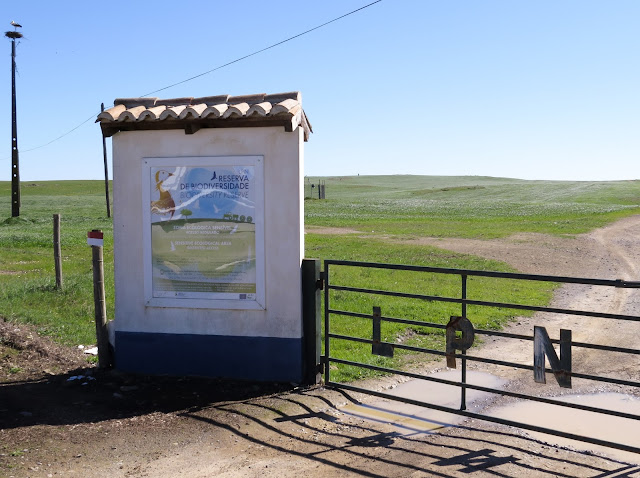 |
| The entrance to the Great Bustard Reserve in Castro Verde |
Arriving at the gates to the popular Great Bustard reserve at Castro Verde, we were disappointed to find them closed, and without a guide we were sadly unable to enter. However, scanning the surrounding plains the habitat looked ideal, so we took the car down a nearby side-road in an effort to locate any wandering Bustards. Searching the distant fields, I soon locked on to three large birds heading distantly left - surely our target.
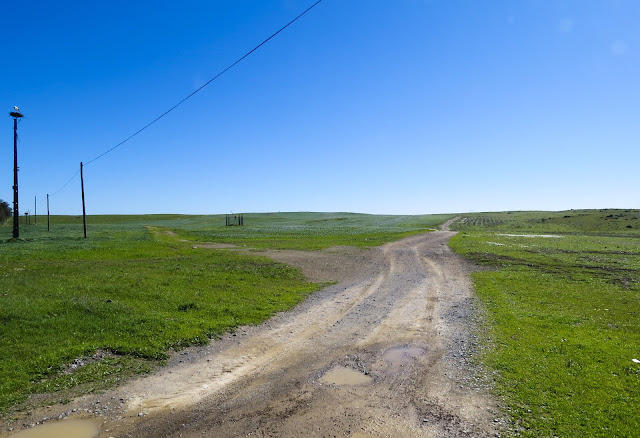 |
| The fields around the reserve - ideal habitat for Bustards |
Being just too far away to confirm and quickly disappearing behind a hill, we decided to try and relocate them in the car, driving around the reserve and following the roads down to Viseus before heading east towards Guerreiro. Expecting dusty and potholed tracks in our hunt for the Bustards, it was a pleasant surprise to be met with road surfaces all in excellent condition even in this remote area – a reoccurring theme we noticed throughout our time in Portugal and putting the British roads to shame!
As we stopped to scan, the cries of Black-bellied Sandgrouse echoed overhead, and we were treated to several flyover flocks during the morning. Like elsewhere in Portugal, the fields were teaming with bird life, and we encountered masses of larks and Corn Buntings in the lush grasses either side of the road.
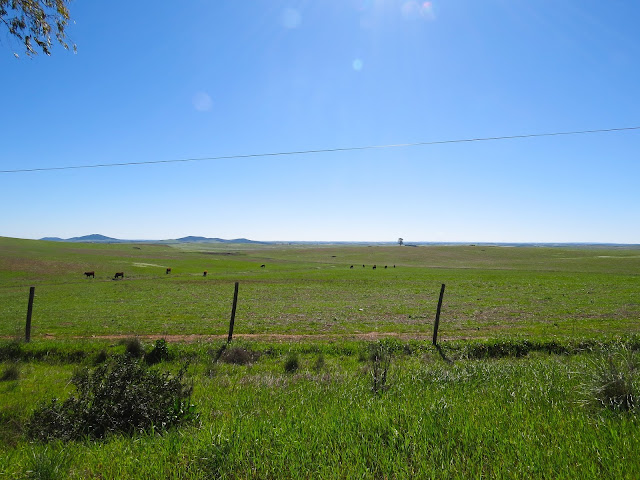 |
| The lush fields of Castro Verde |
Iberian Grey Shrikes and Spotless Starlings were a regular sight perched on the wires, while White Stork nests seemed to adorn every other telegraph pole, the huge structures balanced on specially placed platforms.
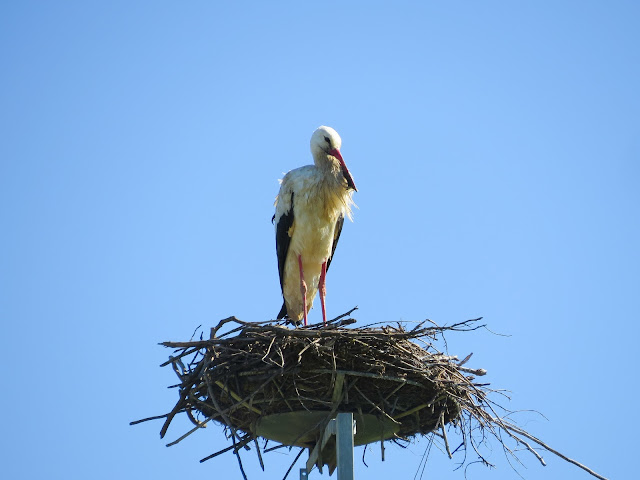 |
| White Stork nest |
Raptors were also in abundance here, and we encountered several Common Kestrels, Common Buzzards, Red Kites and even Marsh Harriers – the latter a species I wouldn’t normally associate with this type of habitat. Sadly, the Lesser Kestrels eluded me yet again - something that will have to be put right with a trip to Extremadura in the future!
 |
| Marsh Harrier - an unexpected sight on the plains of Castro Verde |
Approaching the patch of fields the Bustards looked to have flown to, we stopped the car at regular intervals to scan the surrounding plains, the heat haze making viewing somewhat difficult. It wasn’t long before Alex’s eagle eyes spotted one however, and getting me on it, we quickly noticed a further two individuals feeding with the first, gradually moving up the slope. Finally, a long-awaited lifer for both of us in the form of three magnificent Great Bustards.
More than likely the three birds we had spotted flying near the start of the reserve, we watched as they fed in the short grass, an iconic species in these parts and a bird we had both been wanting to see for some time. Despite the distance and heat haze, we managed a few record shots through the scope and admired the sheer size of these incredible birds.
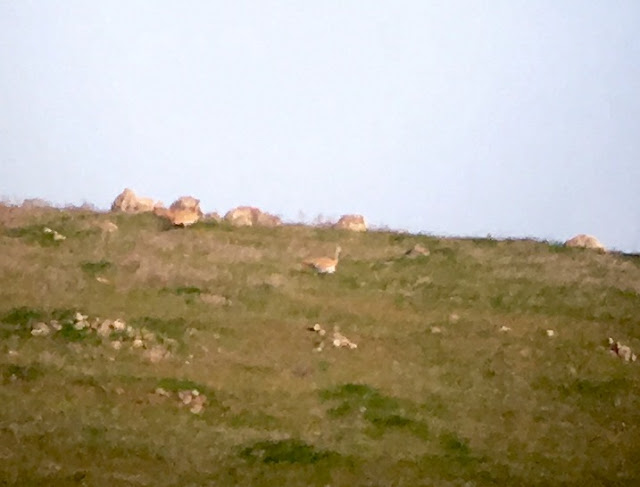 |
| Extreme record shot of a very distant Great Bustard! |
Even though flocks of up to 60 had been reported recently, these three individuals were the only ones of our trip, despite driving the tracks around Castro Verde until well in to the afternoon.
With a whole scattering of Great Bustard records around Castro Verde and the area being a well-known and important site for them, the best thing for anyone looking for them is simply to drive around the area, stopping the car and scanning for any movement on the plains. The fields around the reserve are a particularly good location for sightings if you can’t get on to the reserve itself, and the eBird map below shows the hotspots around Castro Verde.
 |
| Distribution of Great Bustards this year from eBird |
Satisfied that we had Great Bustard in the bag, we turned our attention to our next target at Castro Verde – Spanish Imperial Eagle. With several birds resident in the area, including both adults and juveniles, we headed up to the high lookout point of the church at Ermida de Nossa Senhora, just east of Monte Salto and west of Corte Pequena. Here, the road suddenly disintegrated, and after extremely careful and expert manoeuvring by Alex, we finally made it to the top of the steep slope. Here, the views were absolutely fantastic, and we took in the stunning vistas of the beautiful Portuguese landscapes for miles around.
The familiar cronking call of a Raven drew our attention back to the sky, but despite scanning the surrounding area for a good while, we sadly drew a blank on our target eagle endemic. Exploring the church area at the top revealed our first (and only) Dartford Warbler of the trip (along with the discovery of a paved road leading up to the church from the other side!) while several fast moving European butterflies flitted around the vegetation, sadly just a little bit too quick to identify.
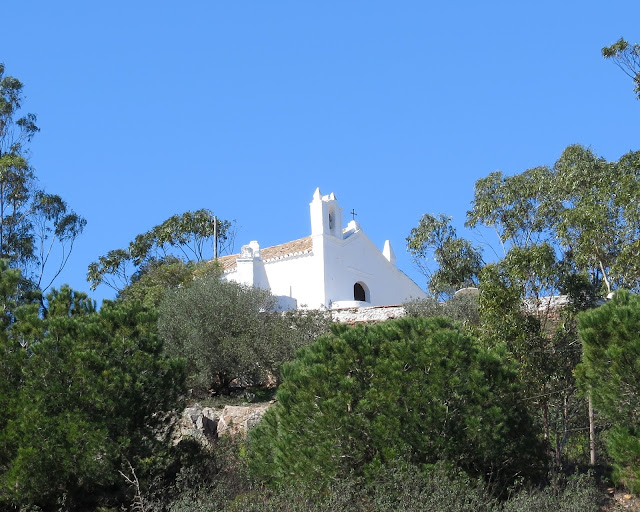 |
| Ermida de Nossa Senhora |
 |
| The view looking out over Castro Verde |
Moving back down to the plains, we decided to try our luck at the Parque Natural do Vale do Guadiana just east of São Marcos da Ataboeira, as there had been several records of Spanish Imperial Eagle a few weeks earlier in this area along with an extremely unseasonable Black Vulture back in December. Here, along with the many Barn Swallows, Crag Martins and House Martins, we caught up with our first and only Red-rumped Swallows for the trip - always a great sight to see flitting through the Mediterranean sky.
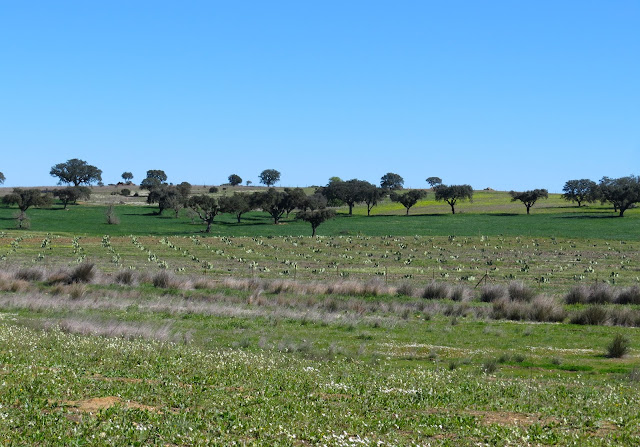 |
| It was unusual to see a field full of cacti growing! |
Unfortunately, the Spanish Imperial Eagles eluded us once again, and we headed back in to the plains of Castro Verde in a final effort to see if we could locate this iconic species. Nearing Corte Pequena, we came across an excellent candidate, the large pale wings and white patch near the tail all positive features, but it was just too distant to 100% confirm without better views, especially with Spanish Imperial Eagle being a lifer. Having powered east and now lost to view, this sadly proved impossible, although a fantastically close flock of Little Bustards right by the roadside went some way towards a consolation.
 |
| Little Bustards! |
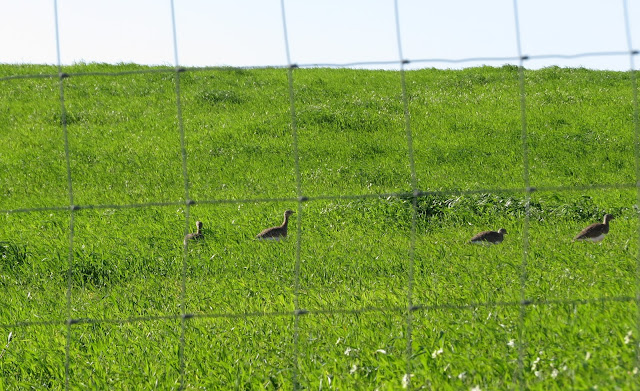 |
| The flock through the fence |
In a similar plumage to the recent individual we saw in Yorkshire back on New Year’s Day in 2015, this was a great opportunity to watch these charismatic birds in their natural habitat (and actually moving this time) and we were also treated to a brilliant display as some of the flock took flight, revealing their beautiful black and white wings.
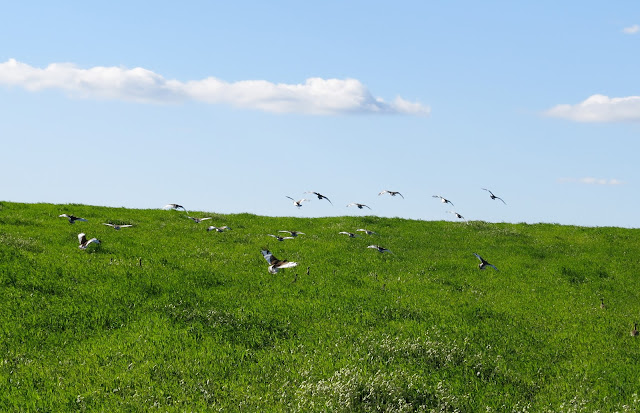 |
| Little Bustards in flight |
With our dip in to Portuguese birding now sadly coming to a close, we headed back towards Faro and our last site of the trip – the pools at Quinta do Lago and a chance to catch up with an established exotic in these parts – Black-headed Weaver. Originating from Africa and accepted on to Category C in Portugal with the populations deemed to be self-sustaining, we were keen to catch up with this attractive and unusual looking bird.
Arriving at just before 5, we only had a couple of hours left before the light faded. A Hoopoe having a dust bath on the entrance road was a nice distraction, while several more Iberian Magpies flitted noisily through the trees.
 |
| Hoopoe |
Heading down the small track down to the artificial pools in the grounds of the most expensive golf course in Europe, it was obvious that this location, despite its urban setting, was incredibly rich in birdlife, and there was a completely different variety of species here compared to the other sites we had been visiting.
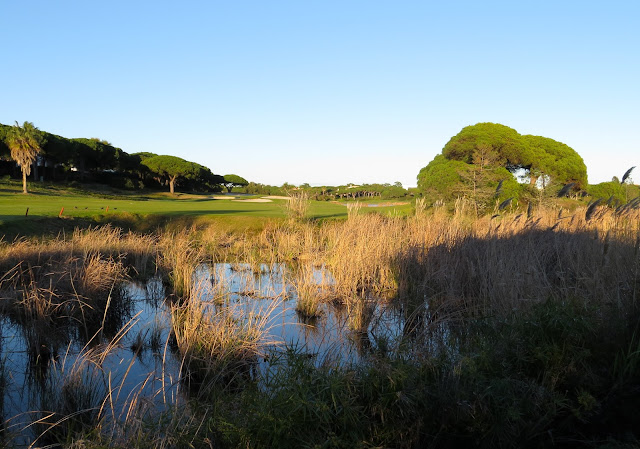 |
| The reedbed at Quinta do Lago |
Several Purple Swamphens (always a favourite of mine) fed on the short golf course turf next to the pool, their bright red legs and purple feathers standing out and bringing a welcome splash of colour to the evening.
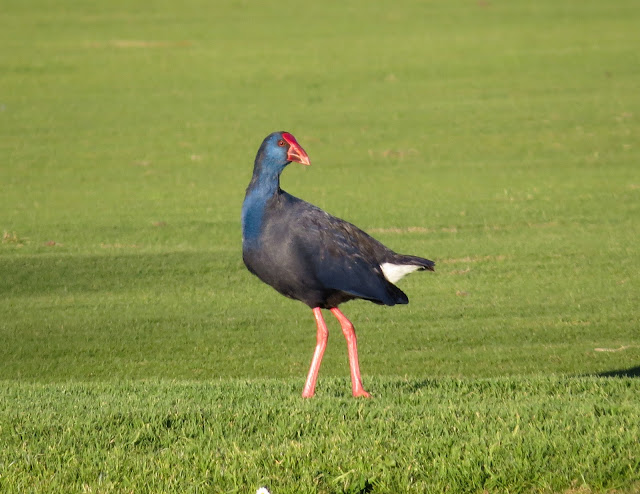 |
| Purple Swamphen |
Coots, Moorhens and several species of ducks all dabbled about in the water, while lines of terrapins sunned themselves on the banks amongst the reeds.
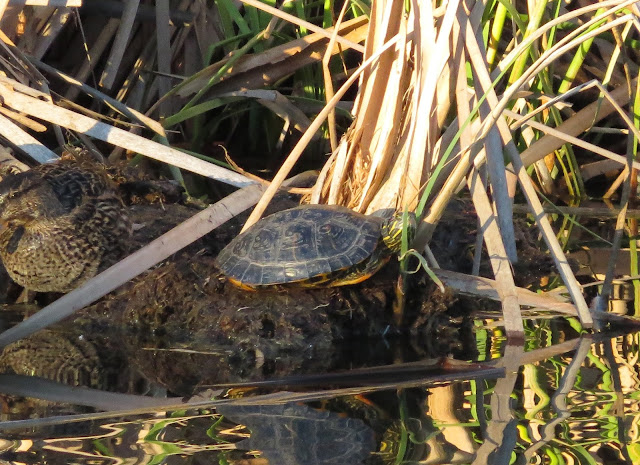 |
| Sunbathing Terrapin |
With time against us and not many reports of Black-headed Weavers here on e-bird recently, we were unsure whether we would manage to track down our target before the sun set. We needn’t have worried – just 5 minutes after arriving Alex locked on to an unfamiliar tropical song emanating from the reeds, swiftly followed by the emergence of a fine breeding plumaged male Black-headed Weaver.
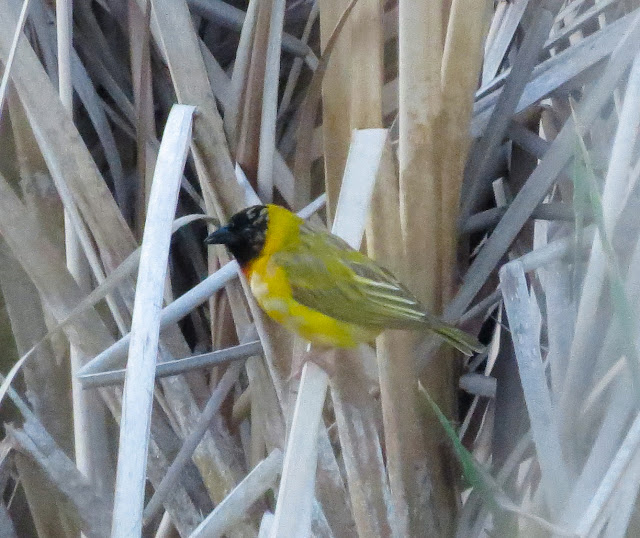 |
| Male Black-headed Weaver |
Singing throughout, we watched as this vibrant male hopped from stem to stem, eventually being joined by his much drabber female counterpart as they bobbed through the reeds. Apparently having paired up, we watched as they worked the area on the left hand edge of the pools, surely looking for a prospective nest site in which to weave their miraculous ball-like nest structure.
Extremely satisfied that we had succeeded with our final target of the trip, we headed over to the other side of the pools to check out the tower hide overlooking the reeds.
A large number of swifts were congregating over the water catching the last of the insects in the evening sun, and we were able to positively identify several as being Pallid.
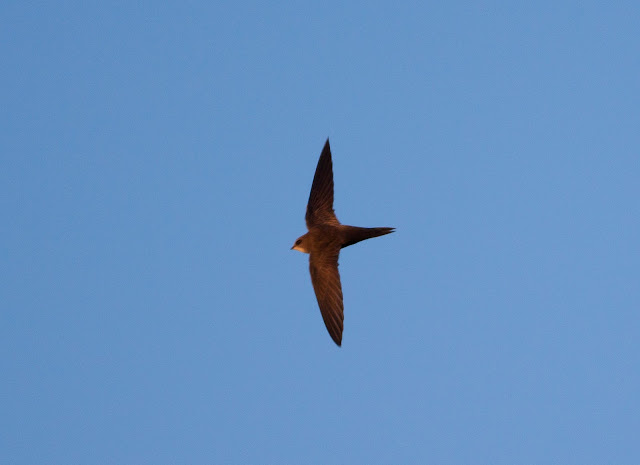 |
| Pallid Swift |
Always a tricky confusion species for me, their dark eye masks coupled with a pale throat, scaled body pattern and much wider bodies behind the wing were all obvious on several photos I’d managed to snap of these quick flying aerial masters, and whilst dashing through the sky they were noticeably browner in colouration.
As well as several more pairs of Black-headed Weavers darting around the reeds, we also managed to spot several Spoonbills amongst the numerous Cattle Egrets coming in to roost, while a cracking adult Audouin’s Gull was a great find by Alex, interspersed within the mass of gulls coming to rest on the water.
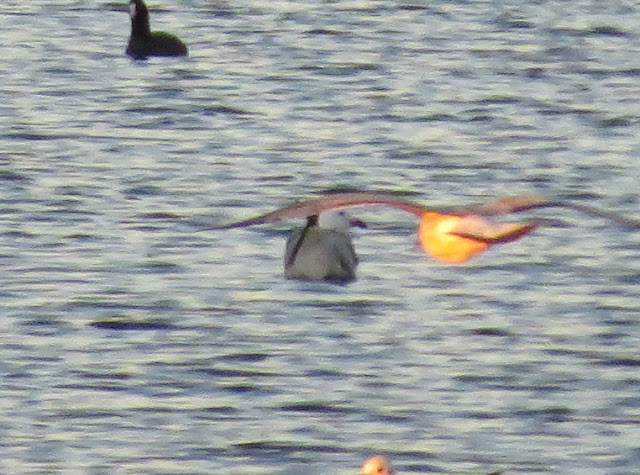 |
| Audouin's Gull - a great find by Alex |
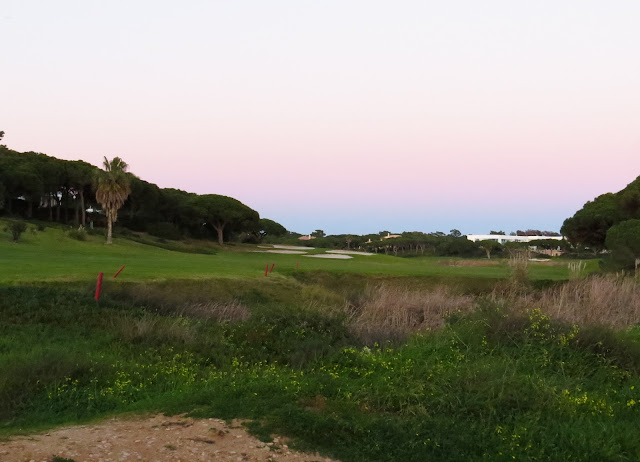 |
| The sun setting on Quinta do Lago |
Stopping to scan the salt marsh and estuary on our way back to the car before the very last of the light faded revealed three Kentish Plovers pottering about the sand, while another pair of Spoonbills hastily fed up before darkness.
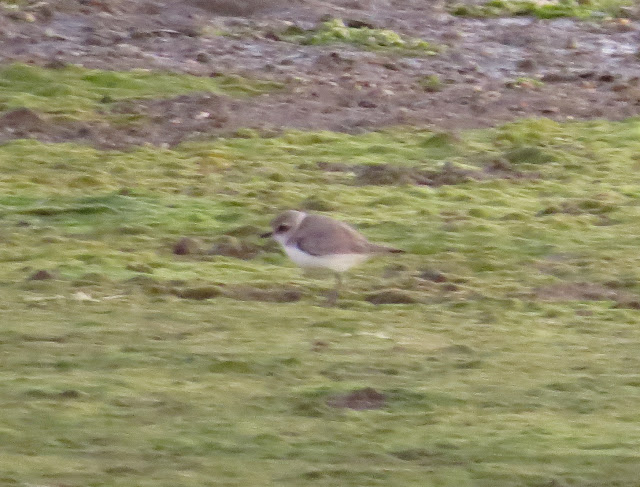 |
| Record shot of the Kentish Plover as the light was fading |
With the light now disappearing completely, we headed in to Faro for our final night’s stay, enjoying one last delicious Portuguese meal of seafood pasta and flavoursome pork steaks. Managing to notch up several of our key targets in just three days whilst exploring a beautiful brand new country, we had both thoroughly enjoyed our stay in Portugal. From the stunning plains of Castro Verde and the towering mountains of Monchique to the urban luxury of Quinta do Lago and the lush farmlands of the Portuguese countryside, Portugal was a stunning country and we were both glad we made the trip over. Always great to spend time birding in the rich sun-soaked habitats of the Mediterranean, special thanks are in order to Alex for doing all of the driving, and with Black-shouldered Kite, the Great Bustards and the iconic Iberian Magpies all particular highlights of our stay, we left Portugal extremely satisfied with our finds.
 |
| Black-shouldered Kite |
 |
| Great Bustards |
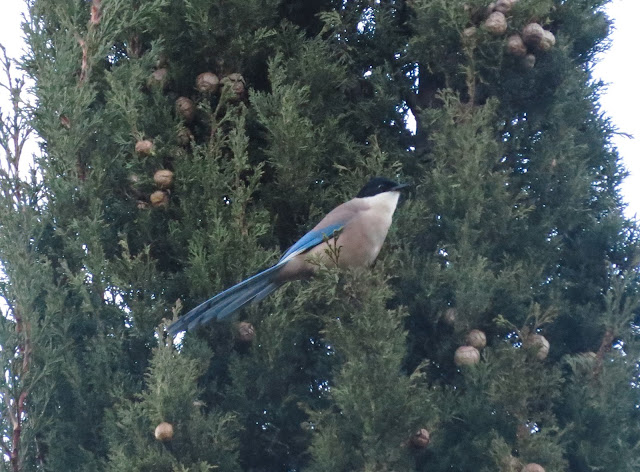 |
| Iberian Magpie |
 |
| An aerial view of Portugal from the plane |






















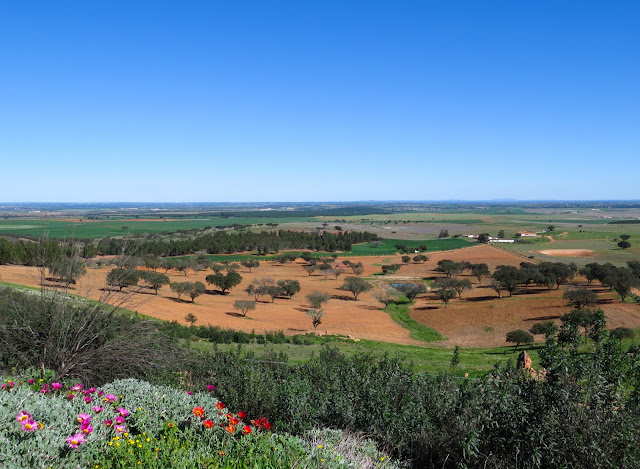
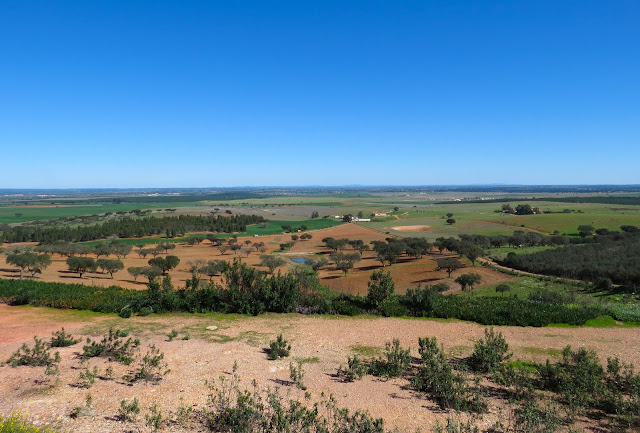
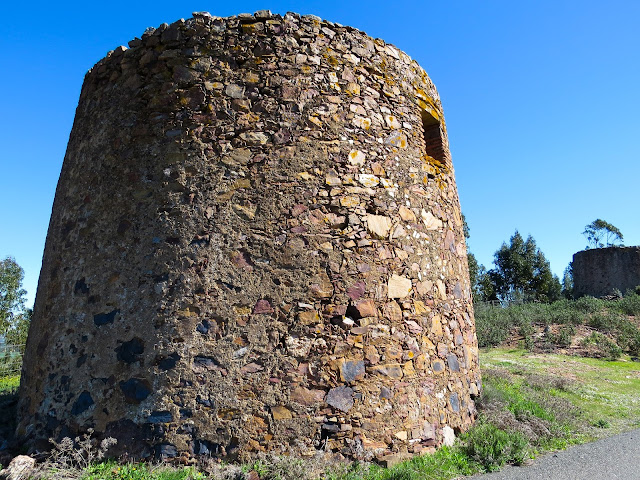
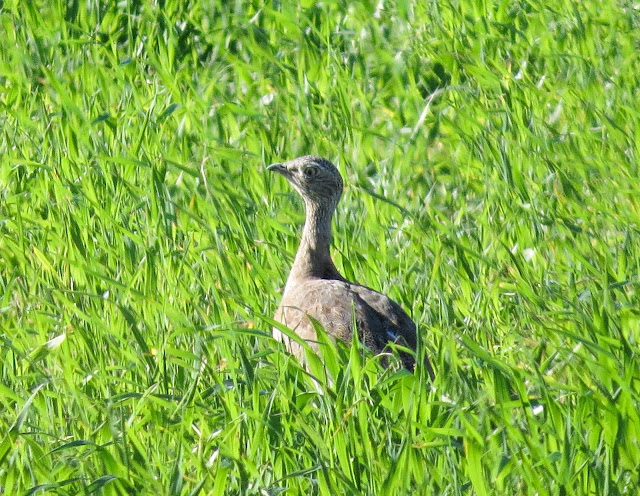

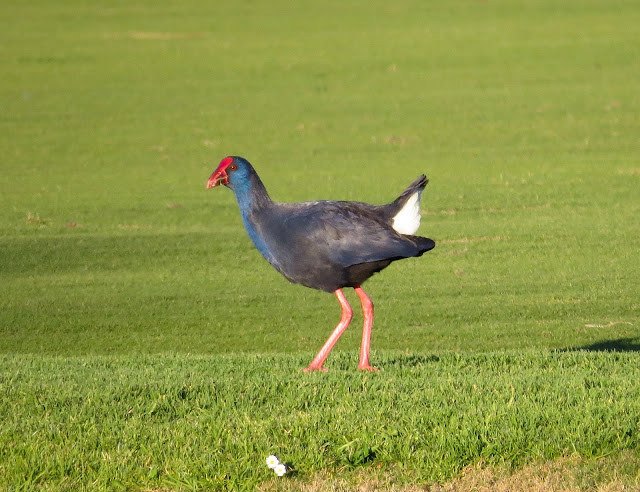
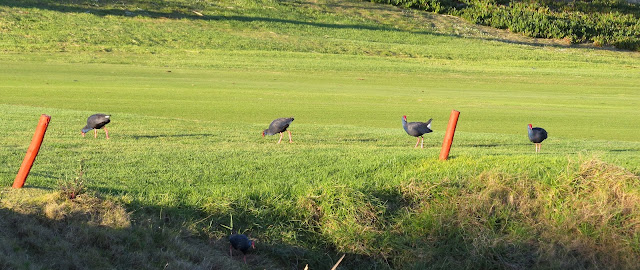
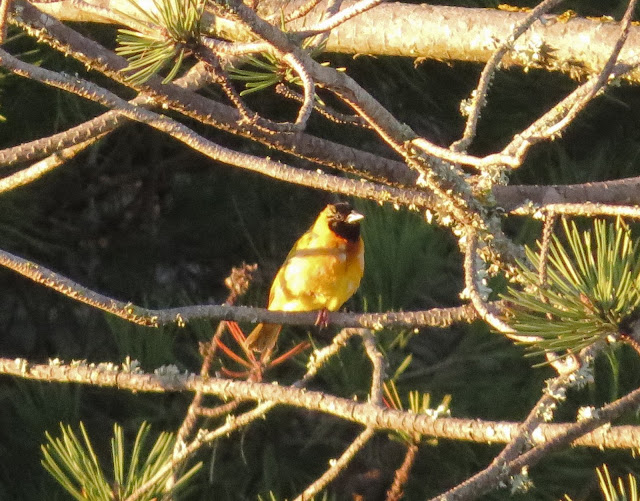








Hi,
ReplyDeleteWhat a great trip report.
We are planning a trip to Portugal in Late April - May 2019
Our plans are to stay in Porto a few days then rent a car and drive to Durro valley
Parque Natural da Serra da Estrela
Piodao
Down towards Castro Verde
Parque Natural do Sudoeste Alentejano e Costa Vicentina
Lisbon
We only have the car for 8 days, does this sound doable to you or are we going to spend to much time in the car?
How are the backroads in Portugal? Does it take much longer to take smaller roads?
Will it be hard to fin accommodation going to more remote places?
Would you recommend booking ahead of our trip or will we find places to stay as we go?
I understand there are many tourists visiting Portugal, is that true even to more remote places?
Our big interests are hiking, bird watching, local food, local history and to find some off the beaten path places.
Do you have any must places to visit for birding and wildflowers?
Thank you,
Caroline
Hi Caroline
DeleteHope it was useful! I would say that is certainly do-able in 8 days, the only relatively long drive is between Piodao and Castro Verde. We found the backroads to be in a really good condition and fully tarmaced so you shouldn't have any issues there. I would recommend booking ahead your accommodation just so you don't find yourself stuck if you can't find anywhere with a vacancy, plus you can look ahead to find places that are a little bit nicer or cheaper. We always book our accommodation ahead of time for this reason. We found a few tourist places to visit in the remote areas that were quite toursisty such as little churches or chapels, I'd probably advise looking on google or googling the areas you are going to to see what hidden gems you can find. Castro Verde was very good for birds as we were there to look for the Bustards, from memory though we didn't see that many wild flowers as it was February when we visited and perhaps a tad too early! I hope you have a lovely trip, Portugal was lovely so I'm sure you'll enjoy it!
Stephanie